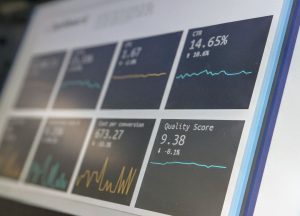Forex traders often face the question of what time frame to use for their trading. The answer to this question is not straightforward because there is no one-size-fits-all answer. Different traders have different preferences and trading styles, and what works for one trader may not work for another. In this article, we will discuss the different time frames available for forex trading and their advantages and disadvantages.
What are Forex Time Frames?
Forex time frames refer to the different time periods used to analyze the price movements of currency pairs. Each time frame represents a different level of price data, such as the opening price, closing price, high, and low of a currency pair. Forex traders often use multiple time frames to get a better understanding of the market and make more informed trading decisions.
Types of Forex Time Frames
There are several forex time frames to choose from, ranging from short-term to long-term. The most common forex time frames are:
1. Scalping: This is the shortest time frame and usually lasts for a few seconds to a few minutes. Scalping involves making quick trades to take advantage of small price movements. This method is highly risky and requires quick reflexes, experience, and a reliable trading platform.
2. Day Trading: Day trading is a popular time frame among forex traders. It involves opening and closing trades within a day. Day traders usually use the 15-minute, 30-minute, and 1-hour time frames to analyze price data.
3. Swing Trading: Swing trading involves holding positions for a few days to a few weeks. Swing traders usually use the 4-hour and daily time frames to analyze price data.
4. Position Trading: Position trading is a long-term trading strategy that involves holding positions for several months to several years. Position traders usually use the weekly and monthly time frames to analyze price data.
Advantages and Disadvantages of Different Time Frames
Each forex time frame has its advantages and disadvantages, and traders must choose the one that best suits their trading style and preferences. Here are some advantages and disadvantages of the different time frames:
Scalping:
Advantages:
– Quick trades can generate quick profits.
– High-frequency trading can increase the chances of making profits.
Disadvantages:
– Highly risky and requires quick reflexes and experience.
– Requires a reliable trading platform.
– High transaction costs due to the high number of trades.
Day Trading:
Advantages:
– Trades are closed within a day, reducing the risk of overnight events.
– Lower transaction costs compared to scalping.
– Traders can take advantage of short-term price movements.
Disadvantages:
– Requires a significant amount of time to analyze price data.
– Traders must be disciplined and avoid the temptation to overtrade.
– Traders must be able to manage their emotions and accept losses.
Swing Trading:
Advantages:
– Trades can last for several days to several weeks, giving traders enough time to analyze price data.
– Lower transaction costs compared to day trading.
– Traders can take advantage of medium-term price movements.
Disadvantages:
– Requires patience and discipline to hold positions for several days to several weeks.
– Traders must be able to manage their emotions and accept losses.
– Trades can be affected by overnight events.
Position Trading:
Advantages:
– Trades can last for several months to several years, giving traders enough time to analyze price data.
– Lower transaction costs compared to short-term trading.
– Traders can take advantage of long-term price movements.
Disadvantages:
– Requires patience and discipline to hold positions for several months to several years.
– Trades can be affected by significant economic events.
– Traders must be able to manage their emotions and accept losses.
Conclusion
Choosing the best time frame for forex trading depends on the trader’s individual preferences and trading style. Scalping, day trading, swing trading, and position trading are the most common time frames used by traders. Each time frame has its advantages and disadvantages, and traders must choose the one that best suits their trading style and preferences. It is essential to remember that no matter what time frame you choose, successful forex trading requires discipline, patience, and a sound trading strategy.





